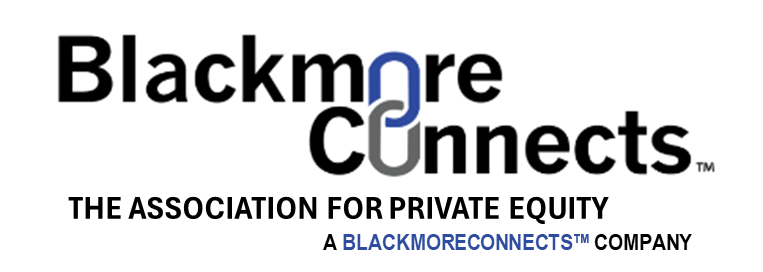Why the CLEAR Framework Works for Lower Middle Market (LMM) Investing
Written By: Gerald O’Dwyer – The PE Guru | December 5th, 2024
The private equity (PE) game in the lower middle market (LMM) is fiercely competitive. Success requires a systematic, repeatable process to identify, evaluate, and maximize opportunities while mitigating risks. The CLEAR Framework is designed to address these needs. When combined with networking opportunities like ACG and 3-6 full BlackmoreConnects conferences, mastermind groups, and tools such as Cyndx and PitchBook, this framework becomes a game changer for executives and investors alike.
By applying the CLEAR Framework, investors can systematically evaluate opportunities, maximize value creation, and achieve successful exits, avoiding the costly pitfalls of waiting for PE firms to find them or failing to meet PE expectations.
The CLEAR Framework for LMM Success
1. Context: Understanding the Environment
Definition: Grasping the specific dynamics of the LMM landscape is foundational. This step ensures that decisions are rooted in macroeconomic trends, industry conditions, and the nuances of targeted businesses.
Why It Matters:
- Helps identify thriving or underserved industries.
- Provides insight into economic trends affecting deal viability.
- Clarifies the characteristics of ideal target companies (e.g., $5M–$50M EBITDA).
Examples:
- Target industries: Industrial services, healthcare, technology, consumer goods.
- Macro trends: Nearshoring, rising interest rates, post-COVID operational efficiency needs.
Payback: Executives who understand the context can better align with PE firms’ investment theses, reducing rejection rates and speeding up deal closure.
2. Leverage Points: Maximizing Value Creation
Definition: Identifying critical areas where strategic actions can yield significant improvements in value.
Why It Matters:
- Focuses on areas with the greatest impact on enterprise value.
- Ensures operational improvements align with market demands.
- Reveals opportunities for margin expansion and customer diversification.
Examples:
- Diversify customer base to reduce concentration risks.
- Implement lean operations to enhance EBITDA margins.
- Leverage technology for operational efficiencies.
Payback: Executives who leverage these points can demonstrate immediate value-add to PE firms, increasing their attractiveness for roles or partnerships.
3. Execution Plan: From Acquisition to Exit
Definition: A detailed roadmap ensures disciplined execution from sourcing deals to creating value and achieving a successful exit.
Why It Matters:
- Provides clear steps for integration and growth post-acquisition.
- Aligns every action with the end goal of maximizing exit value.
- Highlights the importance of leadership and operational expertise.
Examples:
- Phase 1: Pre-acquisition due diligence and cultural alignment.
- Phase 2: Day 1 integration with a focus on quick wins (e.g., cost synergies).
- Phase 3: Prepare for exit through streamlined operations and governance.
Payback: PE firms and executives with a structured plan reduce the likelihood of failure and increase cash-on-cash returns, often achieving 8x+ returns.
4. Assessment Metrics: Measuring Success
Definition: Clear KPIs ensure progress is tracked, and deviations are corrected in real-time.
Why It Matters:
- Keeps focus on the right goals throughout the investment lifecycle.
- Quantifies operational improvements, validating the investment thesis.
- Supports the narrative for an attractive exit.
Examples:
- Pre-acquisition: Deal multiples, due diligence thoroughness.
- Operational: Revenue CAGR, EBITDA growth, customer retention.
- Exit: Multiple expansion (e.g., 5x to 8x EBITDA), IRR above target.
Payback: Well-defined metrics create transparency, enabling quicker and higher-value exits, critical for LMM investors.
5. Refinement Cycle: Continuous Improvement
Definition: Learning from each deal and adjusting strategies based on feedback ensures long-term success.
Why It Matters:
- Keeps strategies adaptive to changing market conditions.
- Avoids repeating mistakes in future deals.
- Encourages innovation and competitive advantage.
Examples:
- Post-acquisition adjustments to integration plans.
- Refining valuation models for better returns.
- Incorporating customer feedback into product/service offerings.
Payback: A refinement mindset leads to compounded improvements across portfolios, ensuring consistent long-term growth.
Why the CLEAR Framework + ACG + Mastermind Groups + Conferences Are Game Changers
The CLEAR Framework is powerful on its own, but when paired with the right tools and networks, it becomes transformational. Here’s why:
1. ACG and BlackmoreConnects Conferences:
- Build relationships with PE firms and fellow executives.
- Access insider knowledge on trends, deal strategies, and key players.
- Payback: Each connection could lead to roles, advisory positions, or deals, with a potential ROI of 10x+ the conference cost.
2. Mastermind Groups:
- Engage with peers to refine strategies and learn from others’ experiences.
- Gain critical feedback on your approach.
- Payback: Accelerates learning and builds confidence, reducing costly mistakes.
3. Cyndx and PitchBook:
- Identify target companies and PE firms quickly and efficiently.
- Validate your investment thesis with data.
- Payback: Cuts research time by months, ensuring faster deal closure or placement.
4. Feedback from PE Firms:
- Understand what PE firms look for in executives and businesses.
- Refine your approach to match PE expectations.
- Payback: Ensures your strategies are aligned with market needs, avoiding rejection.
The Cost of Waiting or Failing
Executives who delay engaging in the PE game risk falling behind:
Cost of Waiting:
- Missed opportunities for roles or partnerships.
- Lost income and equity potential (e.g., $5M–$20M at exit).
Cost of Failing:
- Reputation damage from unpreparedness.
- Financial losses from poorly executed deals.
Why This Framework Works for LMM Investing
The CLEAR Framework works because it provides:
- Systematic Approach: Covers all stages of the investment lifecycle.
- Focus on Value Creation: Highlights operational and strategic improvements.
- Risk Mitigation: Addresses common LMM risks (e.g., customer concentration, succession planning).
- Scalability: Adaptable to different industries and investment theses.
By applying the CLEAR Framework and leveraging tools like ACG, BlackmoreConnects conferences, mastermind groups, and Cyndx/PitchBook, executives and investors can maximize paybacks while avoiding the costly pitfalls of inaction or missteps.
This is your playbook for winning the PE game. Are you ready to take the next step?
